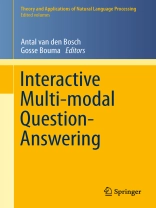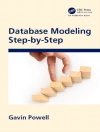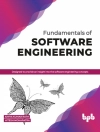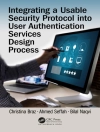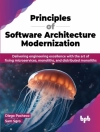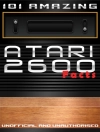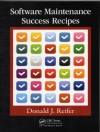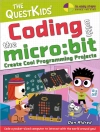This book is the result of a group of researchers from different disciplines asking themselves one question: what does it take to develop a computer interface that listens, talks, and can answer questions in a domain? First, obviously, it takes specialized modules for speech recognition and synthesis, human interaction management (dialogue, input fusion, and multimodal output fusion), basic question understanding, and answer finding. While all modules are researched as independent subfields, this book describes the development of state-of-the-art modules and their integration into a single, working application capable of answering medical (encyclopedic) questions such as ‘How long is a person with measles contagious?’ or ‘How can I prevent RSI?’.
The contributions in this book, which grew out of the IMIX project funded by the Netherlands Organisation for Scientific Research, document the development of this system, but also address more general issues in natural language processing, such as the development of multidimensional dialogue systems, the acquisition of taxonomic knowledge from text, answer fusion, sequence processing for domain-specific entity recognition, and syntactic parsing for question answering. Together, they offer an overview of the most important findings and lessons learned in the scope of the IMIX project, making the book of interest to both academic and commercial developers of human-machine interaction systems in Dutch or any other language.
Highlights include: integrating multi-modal input fusion in dialogue management (Van Schooten and Op den Akker), state-of-the-art approaches to the extraction of term variants (Van der Plas, Tiedemann, and Fahmi; Tjong Kim Sang, Hofmann, and De Rijke), and multi-modal answer fusion (two chapters by Van Hooijdonk, Bosma, Krahmer, Maes, Theune, and Marsi).
Watch the IMIX movie at www.nwo.nl/imix-film.
Like IBM’s Watson, the IMIX system described in the book gives naturally phrased responses to naturally posed questions. Where Watson can only generate synthetic speech, the IMIX system also recognizes speech. On the other hand, Watson is able to win a television quiz, while the IMIX system is domain-specific, answering only to medical questions.
‘The Netherlands has always been one of the leaders in the general field of Human Language Technology, and IMIX is no exception. It was a very ambitious program, with a remarkably successful performance leading to interesting results. The teams covered a remarkable amount of territory in the general sphere of multimodal question answering and information delivery, question answering, information extraction and component technologies.’
Eduard Hovy, USC, USA, Jon Oberlander, University of Edinburgh, Scotland, and Norbert Reithinger, DFKI, Germany
İçerik tablosu
Part I Introduction to the IMIX Programme.- Introduction. Antal van den Bosch and Gosse Bouma.- IMIX: Good Questions, Promising Answers. Eduard Hovy, Jon Oberlander, and Norbert Reithinger.- The IMIX demonstrator: an information search assistant for the medical domain. Dennis Hofs and Boris van Schooten and Rieks op den Akker.- Part II Interaction Management.- Vidiam: Corpus-based Development of a Dialogue Manager for Multimodal Question Answering. Boris van Schooten and Rieks op den Akker.- Multidimensional Dialogue Management. Simon Keizer, Harry Bunt, and Volha Petukhova.- Part III Fusing Text, Speech, and Images. Experiments in Multimodal Information Presentation. Charlotte van Hooijdonk, Wauter Bosma, Emiel Krahmer, Alfons Maes, and Mariët Theune.- Text-to-text generation for question answering. Wauter Bosma, Erwin Marsi, Emiel Krahmer and Mariët Theune.- Part IV Text Analysis for Question Answering Automatic Extraction of Medical Term Variants from Mutilingual Parallel Translations. Lonneke van der Plas, Jörg Tiedemann, and Ismail Fahmi.- Relation Extraction for Open and Closed Domain Question Answering . Gosse Bouma, Ismail Fahmi, and Jori Mur.- Constraint-Satisfaction Inference for Entity Recognition. Sander Canisius, Antal van den Bosch, and Walter Daelemans.- Extraction of Hypernymy Information from Text. Erik Tjong Kim Sang, Katja Hofmann and Maarten de Rijke.-Towards a Discourse-driven Taxonomic Inference Model . Piroska Lendvai.
